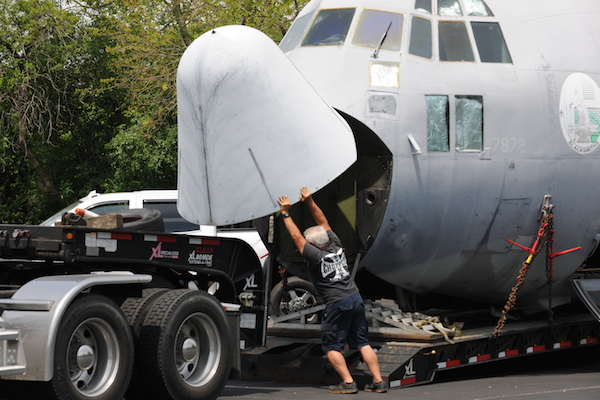President's Blog: From the Heart

Soaring High
By Eric F. Spina
Nothing quite catches your attention like the sight of a giant Hercules C-130 aircraft in the parking lot at Curran Place, home of the University of Dayton Research Institute.
It’s a test lab for real-world, hands-on aerospace research, but it’s also symbolic of UDRI, which continues to spread its wings and soar higher and higher.
In the past five years, the University of Dayton has logged double-digit sponsored research growth every year, culminating in a record $166 million during the last fiscal year (ending June 30, 2019) — a year that saw it hit the $2.5 billion milestone in cumulative sponsored research over its history.
In the last three years, UDRI, which performs more than 90 percent of the University's research and development, has expanded the number of researchers and support personnel by more than a third, adding nearly 200 stellar staff.
And I can proudly say that as a result of their efforts, the University of Dayton is the #1 university in the *entire* nation in the amount of sponsored materials R&D research we conduct.
The numbers are indeed remarkable, but it’s the quality of research that impresses me the most and it’s the impact that matters. And believe you me, UD research does matter, as faculty and UDRI staff solve immediate, pressing problems and also explore more fundamental questions over periods of years. This is research for the common good — and it involves professional researchers, faculty, and 370 graduate and undergraduate students. What 19-year-old wouldn’t jump at the chance to work side by side in the lab with world-class researchers? That’s an attention grabber on any résumé.
From literally hundreds of projects, here are a few examples of the world-changing research conducted on our campus:
With an eye toward improving care, Professor Khalid Lafdi and Edward Timm are testing a “fuzzy fiber” that could revolutionize glaucoma treatment.
Software engineer Kelly Cashion Beigh is combatting opioid abuse by using neurofeedback to help people with addictions reduce cravings.
Biology professor Takis Pitychoutis has discovered a protein in the brain that could play a role in helping patients with ADHD, autism and schizophrenia, work that’s caught the attention of the National Institutes of Health.
In a solar-powered mobile home, researchers are developing innovative energy technologies.
Other researchers are using ultrasound and X-ray to look for hidden damage beneath the surface of aerospace structures.
Our growing volume of contracts in diverse fields — from hypersonics and sensors to autonomy and advanced manufacturing — makes us a powerhouse in higher education nationally. That’s not hyperbole. We rank eighth in the country among private universities without medical schools in federally sponsored R&D and #1 in engineering research among Catholic universities.
John Leland, vice president for research, and Allan Crasto, executive director of UDRI, have built a high-growth organization by investing in people, developing a forward-looking strategic research agenda, and encouraging all who work with them to be nimble and flexible, creative and bold.
It's a strategy that's led to phenomenal growth.
It's why we're soaring high.
